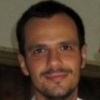Politecnico di Milano
Politecnico di Milano (PoliMi) is one of the largest universities in Italy and it is well acknowledged in Europe as a technical school for engineering. Thanks to a successful long term collaboration between “Dipartimento di Fisica”and “Dipartimento di Elettronica, Informazione e Bioingegneria”,PoliMi carried out research on time‐resolved diffuse spectroscopy systems with single‐photons sensitivity and picoseconds resolution by pioneering novel technologies (pulsed laser, single‐photon detectors, gating electronics).The university is well‐known for its worldwide leadership in the development of SPAD (Single‐Photon Avalanche Diode), their associated electronics (e.g. TDCs, imaging chips) and instrumentation (application‐specific detection modules, singlephoton imaging cameras, etc.). PoliMi presents long‐lasting expertise in simulations of diffuse optics paradigmatic cases, thus allowing instruments performance validation in novel unexplored applications.
Key Staff

Davide Contini received the Master degree in electronics engineering and the Ph.D. degree in Physics fromthe Politecnico di Milano, Milan, Italy, in 2003 and 2007, respectively. He has been an Associate Professor of Physics at Politecnico di Milano since 2014. His research activity is focused on the study of the interaction of laser light with matter. In this framework, his main topic of interest is time‐resolved spectroscopy of highly diffusive media for applications in biology and medicine. He designed, developed and characterized different systems for the non‐invasive measurement of the functional activity in the cerebral and muscular tissues, exploiting the changes in optical properties due to tissue metabolism. These instruments were applied in the field of Neuroscience and Rehabilitation. He developed novel approaches to photon migration and novel instrumental solutions to implement them based on gated Silicon Photon Avalanche Diodes. His research activity is performed in collaboration with multidisciplinary research groups both in Europe and U.S. He has participated in more than five EC funded projects and he is WP leader in another one. He co‐authored more than 100 publications on journals and conference proceedings.

Paola Taroni is full professor of Physics at Politecnico of Milano (Italy) since 2011 and Head of the PhD Programme in Physics since 2013. Her research activity concerns mainly the development of laser systems for time‐resolved spectroscopy and imaging, and their applications in biology and medicine with specific attention to the translation of novel techniques to the clinical use. The field of her activity includes: time domain diffuse optical spectroscopy for the non‐invasive characterization of biological tissues (e.g. for the assessment cancer risk related to breast density); time‐resolved multi‐wavelength optical mammography; time‐resolved fluorescence spectroscopy for the photophysical characterization of endogenous and exogenous pigments (e.g. photosensitizers for the photodynamic therapy); fluorescence lifetime imaging for microscopy studies (e.g. intracellular distribution of Mg2+) and medical diagnostics (e.g. classification of skin lesions). She is co‐author of more than 120 scientific papers on international refereed journals, 9 book chapters, and more than 100 conference proceedings.

Alberto Tosi received the Master degree in electronics engineering and the Ph.D. degree in information technology engineering from the Politecnico di Milano, Milan, Italy, in 2001 and 2005, respectively. He was Assistant Professor from 2006 to 2014 and he has been an Associate Professor of Electronics since 2014 both at Politecnico di Milano. He design, develops and exploits silicon, InGaAs/InPand Ge‐on‐Si Single‐Photon Avalanche Diodes (SPADs). He works on arrays of silicon SPADs for 2D and 3D applications, on silicon photomultipliers and on time‐correlated single‐photon counting electronics. He develops singlephoton counting modules and time‐to‐digital converters high‐resolution high‐throughput applications. In collaboration with other research groups, he develops new applications of single‐photon counting in various fields, from biomedicine to secure communications, from material science to LIDAR. He has been the principal investigator in two EC funded projects. He co‐authored more than 160 publications on journals and conference proceedings, plus 3 patents.

Antonio Giovanni Pifferi has been
Full Professor of Physics at Politecnico di Milano, Department of Physics, since 2016. He is co-author of about 140 papers on peer-reviewed journals, 170 conference proceedings, 10 book chapters. H-index=41 (scopus author ID=7004537463). He is Coordinator of an international project, Principal Investigator of POLIMI unit in 5 EU projects, and WP leader in 2 EU projects. He is a member of the local IEC Committee SC 62D “Medical devices” as national expert on tissue oximeter standardization. His research activity is focussed on the study of photon propagation through highly diffusive media in the visible and near-infrared range (diffuse optics) using time-resolved techniques (picosecond temporal resolution with sensitivity down to the single-photon level). Diffuse Optics has been explored vertically, i.e. from basic research up to exploitation of new applicative directions, and horizontally, that is covering diverse approaches and applications, ranging from optical mammography to functional brain imaging, from food analysis to monitoring of wood products.
 Alberto Dalla Mora received the Master degree summa cum laude in Electronics Engineering and the Ph.D. degree summa cum laude in Information and Communication Technology from Politecnico di Milano (Milan, Italy) in 2006 and 2010, respectively. He has been an Assistant Professor of Physics at Politecnico di Milano since 2011. His research activity is focused on time‐resolved diffuse spectroscopy instrumentations and applications for biomedical diagnosis. He designed, developed and characterized different innovative building blocks for diffuse optics systems, also developing novel approaches to photon migration like the null source‐detector separation technique by means of fast‐gated Single‐Photon Avalanche Diodes. He collaborates with multidisciplinary research groups both in Europe and U.S. He has participated in more than five EC funded projects. He co‐authored more than 25 publications on journals and more than 40 conference proceedings.
Alberto Dalla Mora received the Master degree summa cum laude in Electronics Engineering and the Ph.D. degree summa cum laude in Information and Communication Technology from Politecnico di Milano (Milan, Italy) in 2006 and 2010, respectively. He has been an Assistant Professor of Physics at Politecnico di Milano since 2011. His research activity is focused on time‐resolved diffuse spectroscopy instrumentations and applications for biomedical diagnosis. He designed, developed and characterized different innovative building blocks for diffuse optics systems, also developing novel approaches to photon migration like the null source‐detector separation technique by means of fast‐gated Single‐Photon Avalanche Diodes. He collaborates with multidisciplinary research groups both in Europe and U.S. He has participated in more than five EC funded projects. He co‐authored more than 25 publications on journals and more than 40 conference proceedings.





 Alberto Dalla Mora received the Master degree summa cum laude in Electronics Engineering and the Ph.D. degree summa cum laude in Information and Communication Technology from Politecnico di Milano (Milan, Italy) in 2006 and 2010, respectively. He has been an Assistant Professor of Physics at Politecnico di Milano since 2011. His research activity is focused on time‐resolved diffuse spectroscopy instrumentations and applications for biomedical diagnosis. He designed, developed and characterized different innovative building blocks for diffuse optics systems, also developing novel approaches to photon migration like the null source‐detector separation technique by means of fast‐gated Single‐Photon Avalanche Diodes. He collaborates with multidisciplinary research groups both in Europe and U.S. He has participated in more than five EC funded projects. He co‐authored more than 25 publications on journals and more than 40 conference proceedings.
Alberto Dalla Mora received the Master degree summa cum laude in Electronics Engineering and the Ph.D. degree summa cum laude in Information and Communication Technology from Politecnico di Milano (Milan, Italy) in 2006 and 2010, respectively. He has been an Assistant Professor of Physics at Politecnico di Milano since 2011. His research activity is focused on time‐resolved diffuse spectroscopy instrumentations and applications for biomedical diagnosis. He designed, developed and characterized different innovative building blocks for diffuse optics systems, also developing novel approaches to photon migration like the null source‐detector separation technique by means of fast‐gated Single‐Photon Avalanche Diodes. He collaborates with multidisciplinary research groups both in Europe and U.S. He has participated in more than five EC funded projects. He co‐authored more than 25 publications on journals and more than 40 conference proceedings.